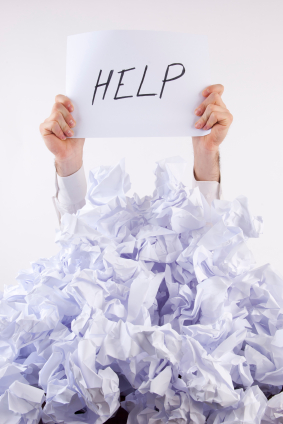 Given that on average we spend eight hours of our lives in the workplace, it is easy to understand why many of us try to give our office a personal touch. Objects like family pictures, your favourite mug, desk lamp accessories, and postcards from friends or relatives have become a common sight in many offices. However, it is also easy to see how an office can become cluttered in a very short time. In this article we take a look at the benefits of decluttering your workspace and we provide the best tips to declutter your office without having to sacrifice that personal touch that we all love.
Given that on average we spend eight hours of our lives in the workplace, it is easy to understand why many of us try to give our office a personal touch. Objects like family pictures, your favourite mug, desk lamp accessories, and postcards from friends or relatives have become a common sight in many offices. However, it is also easy to see how an office can become cluttered in a very short time. In this article we take a look at the benefits of decluttering your workspace and we provide the best tips to declutter your office without having to sacrifice that personal touch that we all love.
The benefits of a decluttered office
There are several reasons why both managers and employees should seriously consider decluttering their workspace. The advantages go well beyond purely aesthetic reasons.
First of all, there are psychological factors involved. Whether at home or at work, when objects begin to pile up around you, chances are that you will end up feeling overwhelmed and disorganised. Efficiency and productivity can then be easily affected.
Moreover, a cluttered office gives a bad and unprofessional impression to clients and visitors, and more importantly, it could present some health and safety hazards and increase the chances of electrical fires or trips and falls.
By making an effort to declutter your office, you will feel lighter, more productive, and on top of things. A decluttering plan can save time and money and help increase productivity and efficiency in the workplace. So just how do you go about decluttering your workspace? Read on for some top tips.
Top tips for decluttering your office desk
When trying to declutter your desk, you might feel you don’t know where to start from. Your computer is a good starting point, as it is one of the main tools of any modern office. Clear the desktop of any unnecessary icons and arrange all your files into clearly labelled folders. Ideally, there shouldn’t be any objects within 6 inches of your computer, unless it’s a keyboard or a mouse.
Use filing cabinets wisely: that means no ‘miscellaneous’ files, as these are an excuse to accumulate junk and unnecessary paperwork.
Also, detangle all computer and telephone cables, and wherever possible, keep them out of sight. If you have a paper tray, use it for paper and paper only. Remove any staples, paper clips, sellotape, pens, and anything that doesn’t belong there. And while we are on the subject of pens, ask yourself how many do you really need. In most cases, more than two are too many.
Next are the drawers. Allocate a function for each drawer (stationery, manuals, printer paper, etc.) and either throw away or give away anything that you haven’t used for more than a couple of months.
How to declutter shared areas in the office
Individual desks are not the only things that need decluttering. Think about shared areas, like reception halls or coffee break rooms. The first thing to consider is whether the current furniture arrangements could be improved to make more room. Office furniture should be laid out in such a way that it forms clear pathways, facilitates easy access, and lets the light in.
Do not keep outdated magazines or newspapers in the waiting room or reception areas. Cushions are ok, but don’t go overboard. The same goes for decorative items, like paintings or sculptures. Make sure that the reception desk is decluttered following the tips mentioned in the previous section.
Don’t keep boxes of paper lying around the printer room, and don’t fall into the temptation of using coffee break rooms and staff rooms as storage space for stationery supplies or old files. The same applies to meeting and conference rooms.
Once you have achieved the decluttered look that you are after, establish a maintenance plan (because we all know how easy it is to fall into old habits), and aim to declutter your office regularly.
